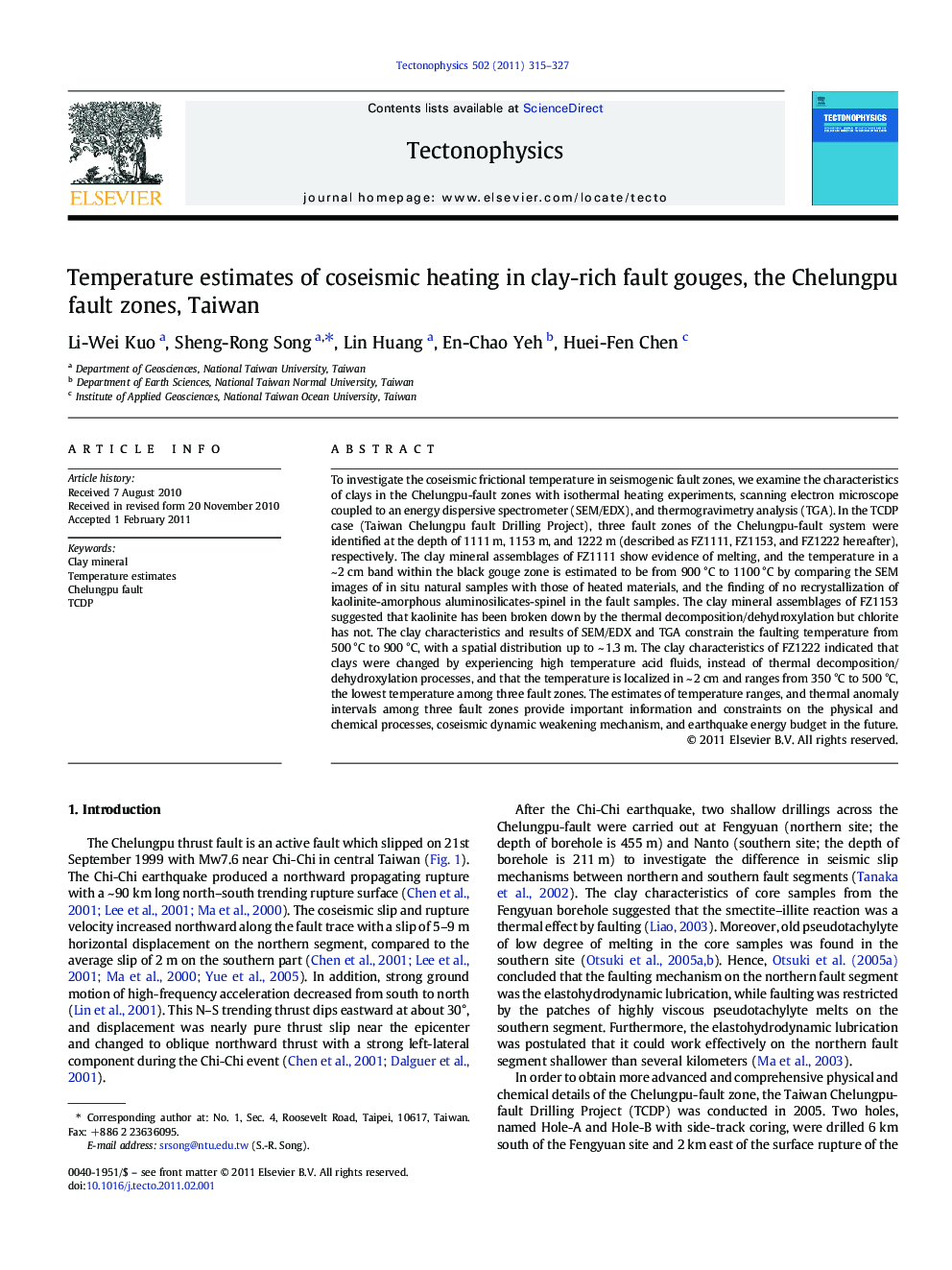| کد مقاله | کد نشریه | سال انتشار | مقاله انگلیسی | نسخه تمام متن |
|---|---|---|---|---|
| 4693127 | 1636848 | 2011 | 13 صفحه PDF | دانلود رایگان |

To investigate the coseismic frictional temperature in seismogenic fault zones, we examine the characteristics of clays in the Chelungpu-fault zones with isothermal heating experiments, scanning electron microscope coupled to an energy dispersive spectrometer (SEM/EDX), and thermogravimetry analysis (TGA). In the TCDP case (Taiwan Chelungpu fault Drilling Project), three fault zones of the Chelungpu-fault system were identified at the depth of 1111 m, 1153 m, and 1222 m (described as FZ1111, FZ1153, and FZ1222 hereafter), respectively. The clay mineral assemblages of FZ1111 show evidence of melting, and the temperature in a ~ 2 cm band within the black gouge zone is estimated to be from 900 °C to 1100 °C by comparing the SEM images of in situ natural samples with those of heated materials, and the finding of no recrystallization of kaolinite-amorphous aluminosilicates-spinel in the fault samples. The clay mineral assemblages of FZ1153 suggested that kaolinite has been broken down by the thermal decomposition/dehydroxylation but chlorite has not. The clay characteristics and results of SEM/EDX and TGA constrain the faulting temperature from 500 °C to 900 °C, with a spatial distribution up to ~ 1.3 m. The clay characteristics of FZ1222 indicated that clays were changed by experiencing high temperature acid fluids, instead of thermal decomposition/dehydroxylation processes, and that the temperature is localized in ~ 2 cm and ranges from 350 °C to 500 °C, the lowest temperature among three fault zones. The estimates of temperature ranges, and thermal anomaly intervals among three fault zones provide important information and constraints on the physical and chemical processes, coseismic dynamic weakening mechanism, and earthquake energy budget in the future.
Research highlights
► Three fault zones with clay anomalies were identified in the Chelungpu fault of TCDP.
► The temperatures by coseismic frictional heat were estimated within clay mineralogy.
► Different temperature ranges were achieved among fault zones during coseismic events.
► The temperatures provide the information about the mechanism of coseismic events.
Journal: Tectonophysics - Volume 502, Issues 3–4, 20 April 2011, Pages 315–327